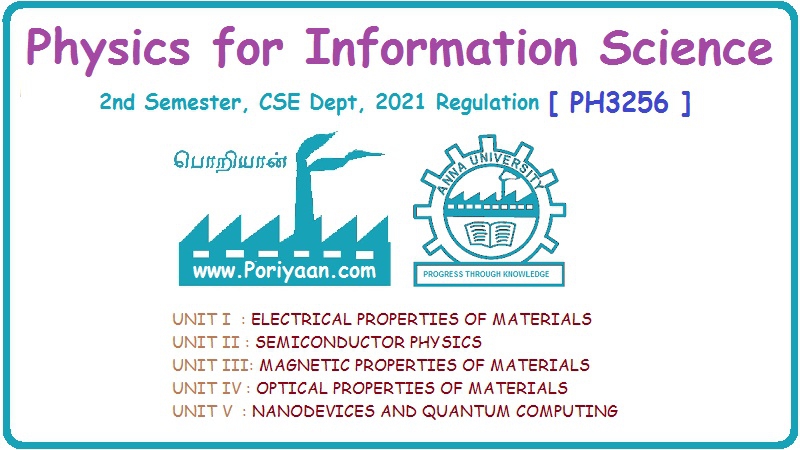Physics for Information Science: Unit IV: Optical Properties of Materials
Laser Diode (GaAlAs-Laser)
Characteristics, Types, Construction, Working Principle, Advantages, Disadvantage
Laser diode is of two categories viz. Homojunction semiconductor, diodeHeterojunction semiconductor diode.
LASER
DIODE (GaAlAs-Laser)
Laser
diode is of two categories viz.
1.
Homojunction semiconductor diode
2.
Heterojunction semiconductor diode
Let
us discuss in detail about hetero junction semiconductor laser diode.
Characteristics
Principle:
The
electron in conduction band combines with a hole in the valence band and hence
the recombination of electron and hole produces energy in the form of light.
This photon, in turn may induce another electron in the conduction band (CB) to
valence band (VB) and thereby stimulate the emission of another photon.
Construction
It
consists of five layers as shown in Fig. 4.25. A layer of GaAs p-type layer (3rd
layer) which has a narrow band gap will act as the active region. This layer
layer (3rd layer) is sandwitched between the two layers having wider
band gap viz. GaAlAs ‒ p-type (2nd layer) and GaAlAs ‒ n-type (4th
layer).
A
contact layer made of GaAs p-type (1st layer) is made to form at the
top of the 2nd layer for necessary biasing. All these four layers
are grown over the substrate (5th layer) made of GaAs-n-type.
The
junctions of GaAs - p-type (3rd layer) and GaAlAs - n-type (4th
layer) are well polished and hence it act as an optical resonator. The upper
and lower electrodes helps in forward biasing the diode.
Working
The
working of a heterojunction laser is similar to that of the working of a
homojunction laser.
1.
The diode is forward biased with the help of upper and lower electrodes.
2.
Due to forward biasing the charge carriers are produced in the wide band gap
layers (2 and 4).
3.
These charge carriers are injected into the active region (layer 3).
4.
The charge carriers are continuously injected from 2nd and 4th
layer to the 3rd layer, until the population inversion is achieved.
5.
At this state some of the injected charge carriers recombines and produces
spontaneously emitted photons.
6.
These spontaneously emitted photons stimulates the injected charge carriers to
emit photons.
7.
As a result more number of stimulated emission arises and thus large number of
photons are produced.
8.
These photons are reflected back and forth at the junction and hence an
intense, coherent beam of LASER emerges out from the P-N junctions of active
region i.e., between layer-3 and layer-4 as shown in Fig. 4.25.
9.
The wavelength of the emitted radiation is given by
This
wavelength lies in IR region.
Advantages
(i)
Power output is very high.
(ii)
It produces continuous wave output.
(iii)
It has high directionality and high coherence.
(iv)
It has low threshold current density compared to homojunction laser.
(v)
These diodes are highly stable and has longer life time.
Disadvantages
(i)
Cost is higher than homojunction laser.
(ii)
Practical difficulties arises while growing the different layers of p-n
junction.
Physics for Information Science: Unit IV: Optical Properties of Materials : Tag: : Characteristics, Types, Construction, Working Principle, Advantages, Disadvantage - Laser Diode (GaAlAs-Laser)
Related Topics
Related Subjects
Physics for Information Science
PH3256 2nd Semester CSE Dept | 2021 Regulation | 2nd Semester CSE Dept 2021 Regulation
